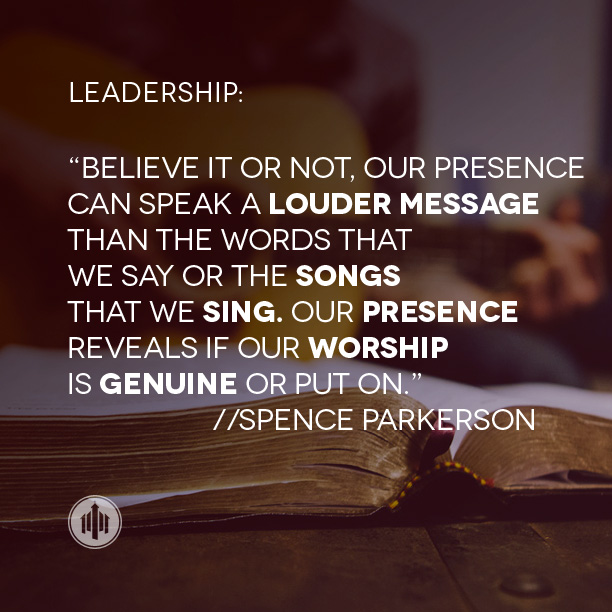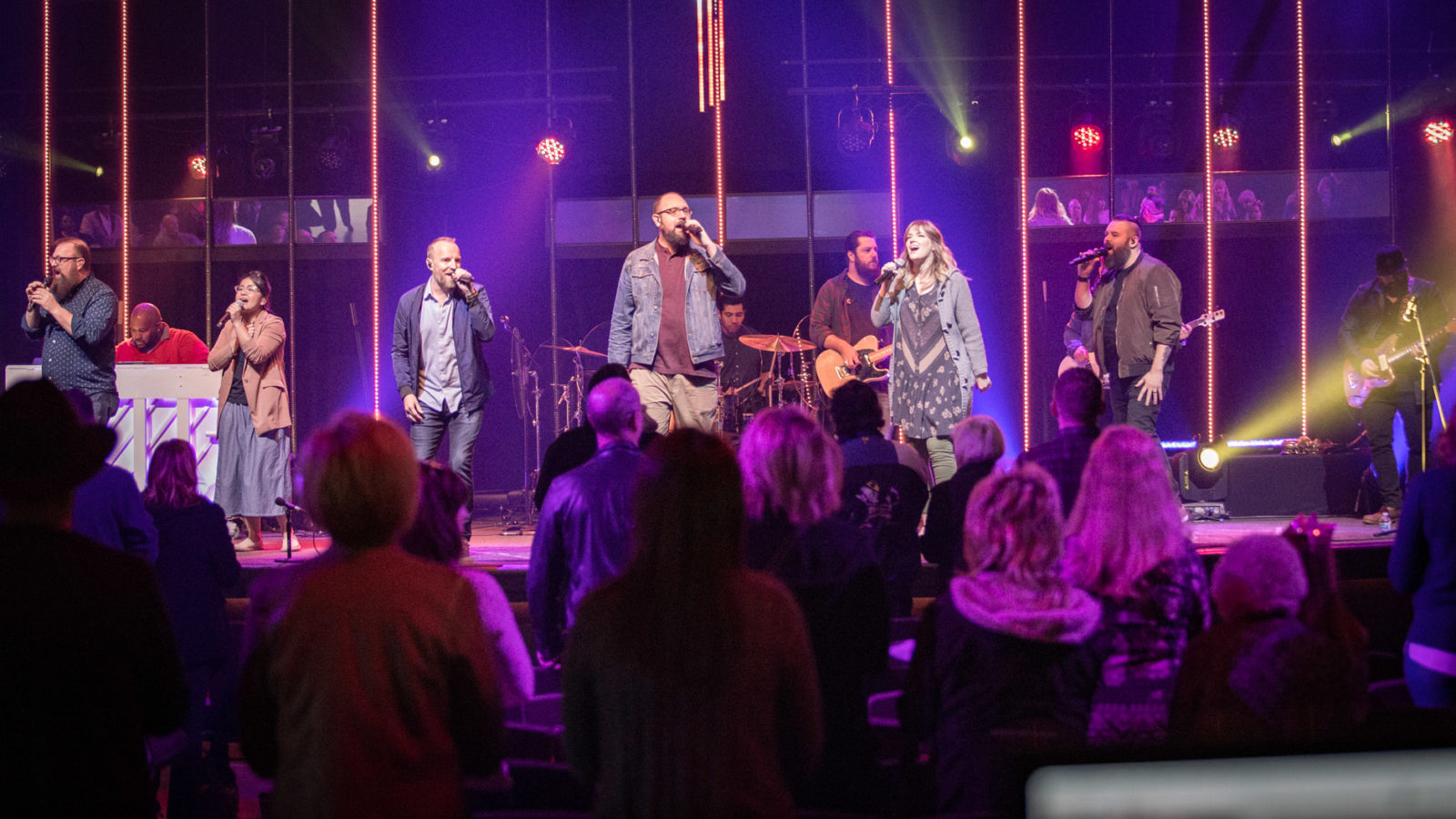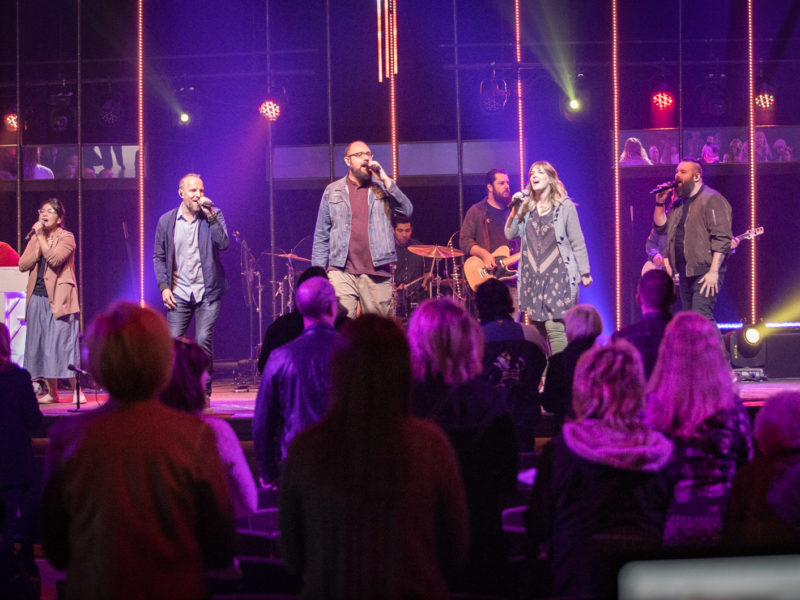In the last section, we spoke about the importance of planning our sets accordingly and preparing our teams to knock it out of the park. Worship leading isn’t all about spontaneity and “going with the flow”. In fact, the larger your team gets the more necessary and imperative it is to plan further in advance and with more intentionality. The reason is that with more people comes a more diverse level of musical abilities and personalities. It is our job to find a system that works best for everyone. The most important thing to remember is that we should always be asking ourselves how to improve or lead our teams better. We will never arrive. However, there are some basic starting points and fundamentals. In the last section, we focused primarily on how we can help lead our teams better. We talked about planning the right people with the right songs. We talked about how each song should have a specific place and purpose in the set, and that each song should lead us in worship before it finds it’s way in our sets. We also talked about how preparation picks up where planning leaves off. Preparing our teams is essential to leading our congregations effectively. We have to understand the basic elements of each song and how every instrument’s part works together to build the dynamics of the song in order to coach our teams through playing them. We also must know and understand what all the musicians need (appropriate material: chords charts, audio files, adequate practice time) so we can make sure they are prepared. Last but not least, we talked about the importance of preparing our hearts. All of these things are so important and necessary to leading a great service, but we must NEVER put the art of leading worship before the heart of leading worship. The art should flow from the heart. Today we are going to look at some practical ways to improve the effectiveness of leading from the platform.
Presence
Presence is something that many of us are uncomfortable talking about, however, it is one of those details that can have a dramatic effect on our leading. Presence is essentially our posture, or body language, while we are in front of others. Believe it or not, our presence can speak a louder message than the words that we say or the songs that we sing. Our presence reveals if our worship is genuine or put on. It reveals if we are joyful or if we are burdened. It reveals if we are confident or insecure. It reveals if we are comfortable or uncomfortable. It reveals if we are engaged or dis-engaged. All of this is communicated by our outward expressions and presence. This is an area that we must get comfortable talking about because ignoring it doesn’t make it go away. I know that it can be a little awkward and it can feel really “unspiritual” to focus on this stuff, but I believe that how we say something is just as important as what we say. In Matthew 7:28-29 it says that the crowds were “astonished at his teaching, for he was teaching them as one who had authority…” They were not only astonished by what Jesus was teaching, but also by how He was teaching… as one who had authority. This separated Him from the other teachers of the day. His heart, mind, body, and soul were all speaking the same message in perfect harmony. Every part making the same plea and working together to communicate the same message. This should be the case as we lead as well. Our excitement should be heard and also seen. Our joy should be told and also felt. Our love and adoration for God shouldn’t just be empty words that we sing, but rather, it should pour out of every part of our being. We should always be aware of what we are communicating both verbally and non-verbally. What message is our presence preaching? Our presence should always communicate the same message as our songs.
As we begin talking more and more about the importance of presence, we must keep this in check though. Focusing too much on presence and not enough on our heart posture will lead to worship leading that is not genuine and fake. We will begin communicating that worship is something that is put on instead of being something that flows from the inside out. There is definitely a danger in focusing too much on presence, but I also believe there is danger in not focusing on it enough. There must be a healthy balance. It is our job as worship leaders to make sure that our presence is singing the same song as our lips. The most important ingredient for genuine worship leading is genuine worship. I tell our guys all of the time to “let our worship lead more than our instruments.” There is nothing more contagious than the passionate, authentic worship of God’s people.
Breaking through the wall
Every week that we take the platform and stand before our congregations, there is an invisible wall that exists. It separates those on stage from those who are not. It keeps the congregation at a distance and identifies those on the platform as different. Even though our goal and heart is to be unified with our people… this wall says that we are not. It separates. It divides. It distances those who are leading from those who are following. And the fact that it is invisible makes it that much more dangerous. It is subtle, not obvious. It whispers lies instead of shouting them. Chances are many of us have never visibly seen this wall but that does not mean that it is not there. It is very much there and I believe the source of it, in the spiritual sense, is spiritual warfare. If the enemy is going to be on the prowl and on the attack… the public gathering of believers with the goal to worship God is a perfect battle ground. And in his attempt to distract and disrupt the worship of God’s people, satan will use anything he can to handicap our worship. So here is the reality; If we do not break through this wall, we will never be able to reach and connect with our people. If we can’t reach them then we will never be able to lead them. This first step in breaking through this wall is understanding how it got there to begin with.
We have already established that the source of this is the spiritual attack from the enemy. But in a more practical sense, some of the components that make up this wall are the stage, the lights, the screens, the microphones, the podiums, the sound system, the instruments, and so many more. In most cases, we are elevated and they are not. We are amplified and they are not. We are spotlighted and they are not. Our primary objective is to be seen as normal and attainable, and not different and lofty. We are trying to break through this wall, not build it up.

The most important and effective tool that we have to break down this wall each week is communicating with our people. We have to be intentional. We have to be real. We have to be genuine. We must push these thing aside and establish common ground. Yes, I agree it is safer and more comfortable to hide behind the wall and just sing, but that is not leading. Leading is removing all obstacles, visible and invisible, for the sake of unhindered worship. Some practical ways I try to do this each week are 1) by just being myself. I don’t want to be someone different on stage because that is just re-affirming what we don’t want. We want to disarm this wall with our communication not strengthen it. 2) By being open. I want people to know that I am no different than they are. I need Jesus just as much as they do and we are in this fight together. 3) By being aware. I try to reinforce each week the reason and purpose for singing. It is not the lights. It is not the music. It is the people on stage. It is to remind ourselves of who God is and to unite us believers in praising Him through our circumstances. He must increase and we must decrease (John 3:30). And finally 4) by being alert. I try to be sensitive to what is engaging and what is distracting each week by assessing the people as we worship. If you are paying attention, they will let you know when something doesn’t connect. Is the music too loud? Are the lights too busy? Is the haze too much? Did that song connect? Did I talk too much? Did I not talk enough? There are more but I think you get the idea.
So hopefully these are some practical ways to help you become a bit more effective as you lead. As I said earlier, this is not an extensive list but mere foundational tips to help you get started on the right track. As you and your team grow, be sure to continue to evaluate what is working and what is not and make the appropriate changes when needed. However, please don’t ever make the mistake of putting the art before the heart because a part from Jesus… all of our talents and best attempts fall short and are filthy rags (Isaiah 64:6).




 The Heart of a Mimic // Part One
The Heart of a Mimic // Part One